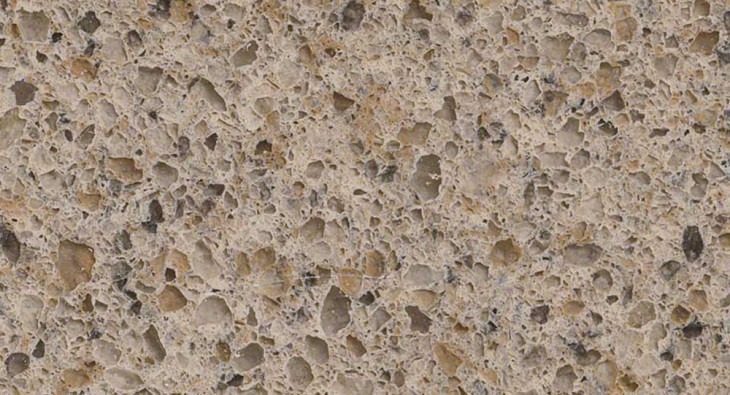Natural stone is a beautiful, durable material that has a myriad of purposes inside and outside your home. It’s also expensive and heavy, which can be difficult for homeowners on a budget or whose homes can’t withstand the weight of natural stone. Manufactured stone was created as a solution to these problems — or at least, that’s how it started. So, what is it, what can you use it for, and how does it stack up against the real thing? Let’s take a look.
How Is It Made?
Manufactured stone is a product that is molded and colored to look like marble, granite, and other desirable natural stones. It’s often made out of concrete or a lightweight aggregate compound, which is poured into molds. The molds are sometimes made by casting natural stones in order to mimic their look and texture more accurately. Then, the stones are painted — sometimes by hand! — in order to capture the range of hues and color variations natural stone can have. When well done, manufactured stone can really almost look like the real thing. When poorly done, well…let’s just say you get what you pay for.
Manufactured Stone vs. Natural Stone: Pros and Cons
The thing is, many of the reasons people turned to manufactured stone instead of natural stone aren’t really problems anymore. In particular, when using stone veneers to cover fireplace fronts, columns, or build retaining walls, the stone slabs used to be cut a lot thicker than they are today, making the veneers heavy and harder to install. Manufactured veneer stone, in contrast, was lighter and installed quickly. Now, however, new cutting technology has allowed natural veneer stone to be sliced much more thinly, making them lighter and easier to use. This is particularly important for outdoor use. In addition, a downside of using manufactured stone outside is that the painted exterior fades away over time, exposing the inner composite material. That means a manufactured stone wall that looks pristine when it was installed can look dingy and dull after just a few seasons. Not so with natural stone: it never loses its color and it often looks better as it weathers and ages.
Manufactured stone is also not necessarily a cheaper option, either, especially considering the lifespan of both materials. Both concrete and natural stone degrade over time, but concrete degrades faster and tends to be more porous. Concrete’s also not a great countertop material because it’s more susceptible to bacteria growth, thermal shock, as well as staining and water damage. This is also why concrete manufactured stone aren’t a great option outside. They’ll simply wear away and look dingy after a few seasons, meaning any money you saved by not choosing natural stone is going to a new wall or patio after a few years.
Are Composite Countertops a Good Alternative?
There is another composite option that tends to be more durable than concrete-based manufactured stone, and that’s quartz and cultured marble. Both materials use synthetic resins to bind together stone dust (or stone chips, as in some quartz countertops). The resins can be dyed virtually any color and, in the case of cultured marble, can be manufactured to mimic similar veining to natural marble. If maintained well, these options can last for years and years. That being said, there are limitations. These composite countertops tend to be more prone to scratching, chipping, staining, as well as heat and sun damage and degradation from strong household cleaners. Although natural stone shares some of these same limitations, overall they tend to be more durable than composite countertops.
Overall, natural stone is more durable and cost-effective than manufactured stone. Although manufactured stone has a lower upfront cost and, when well made, can mimic the look of natural stone pretty convincingly, it still pales in comparison to the real thing when that painted facade wears away after a few years. That being said, composite countertops are a kind of manufactured stone that are really worth considering. Although they have their limitations, they’re not a bad option for most kitchens or bathrooms as long as you know how to care for them and how to prevent potential damage. Got a question about whether or not composite or natural stone would be right for your home? Let us know in the comments!

